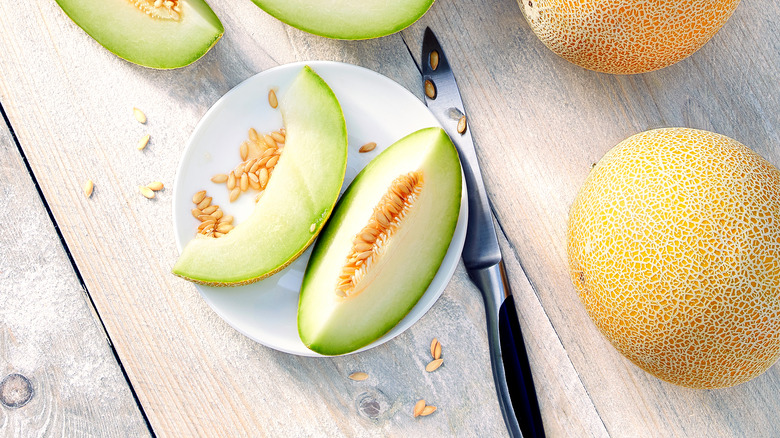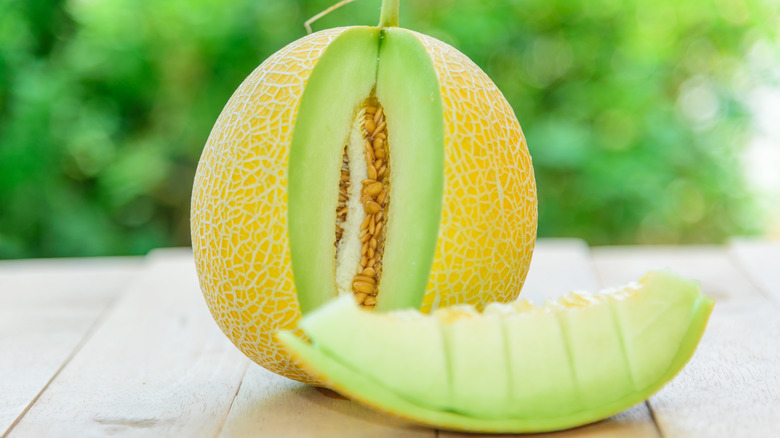This Melon Is Like A Mix Of Cantaloupe And Honeydew
September marks the end of the season for most melon varieties, ushering in fruits and vegetables suited for an autumn palate. This means as August ends, the time to indulge and eat a ripe melon is almost over. While you're getting your last tastes of watermelon, honeydew, and canteloupe, you might want to add another melon variety to your list.
Galia melons were originally developed at the Newe Ya'ar Research Center of the Agricultural Research Organization in Israel, according to Specialty Produce. Named after the daughter of head breeder Dr. Zvi Karchi, Galia melons are a cross between the Ha-Ogen melon or honeydew and the Russian Krymka melon also called canteloupe. The fruit was the first hybrid melon of Israel, earning it the moniker of Israeli Melon.
Belonging to the Cucurbitaceae family (per Specialty Produce), Galia melons retain characteristics of both cantaloupes and honeydew. With a netted rind and soft, yellow-green flesh, the melon is prized for its dessert-like sweetness. Often accompanied by a higher price tag, shares Delighted Cooking, the melon's flavor is used to sweeten items like salads, cocktails — try substituting it in this honeydew cocktail – and sorbet.
How smell can measure ripeness
Although Galia melons are sweet at any point of their lifecycle, their sugariness peaks when ripe. Thankfully, the sweetest of Galia melons can be found with a sharp nose.
Galia's ripeness is measured by observing the color of its skin and the aroma of its flesh. According to Texas Real Food, the first indicator of a ripe melon is its distinctive smell. When fully ripe, the Seattle Times shares, Galia melons will produce a deep fragrance, with both sweet and musky notes. In addition to the fruit's aroma, the melon's rind will also signal ripeness. Specialty Produce says that the rind's color will change from light green to yellow-orange when ripe, hinting at the melon's high sugar level.
These are the key characteristics to look for when testing for ripeness in Galia melons. Per Delighted Cooking, checking the coloring and aroma of the melon differs from the traditional practice of feeling for root softness on other muskmelons. For Galia melons, color and smell trump tenderness around the stem, which works better for cantaloupes and other varieties.
Once you've found the perfect Galia melon there's not much else to do but cut them up and enjoy their delicious taste. Galia melons are typically consumed as is, says Specialty Produce, or paired with salt, chili powder, and other seasonings. So get out there and get picking! When September hits it might be too late.

